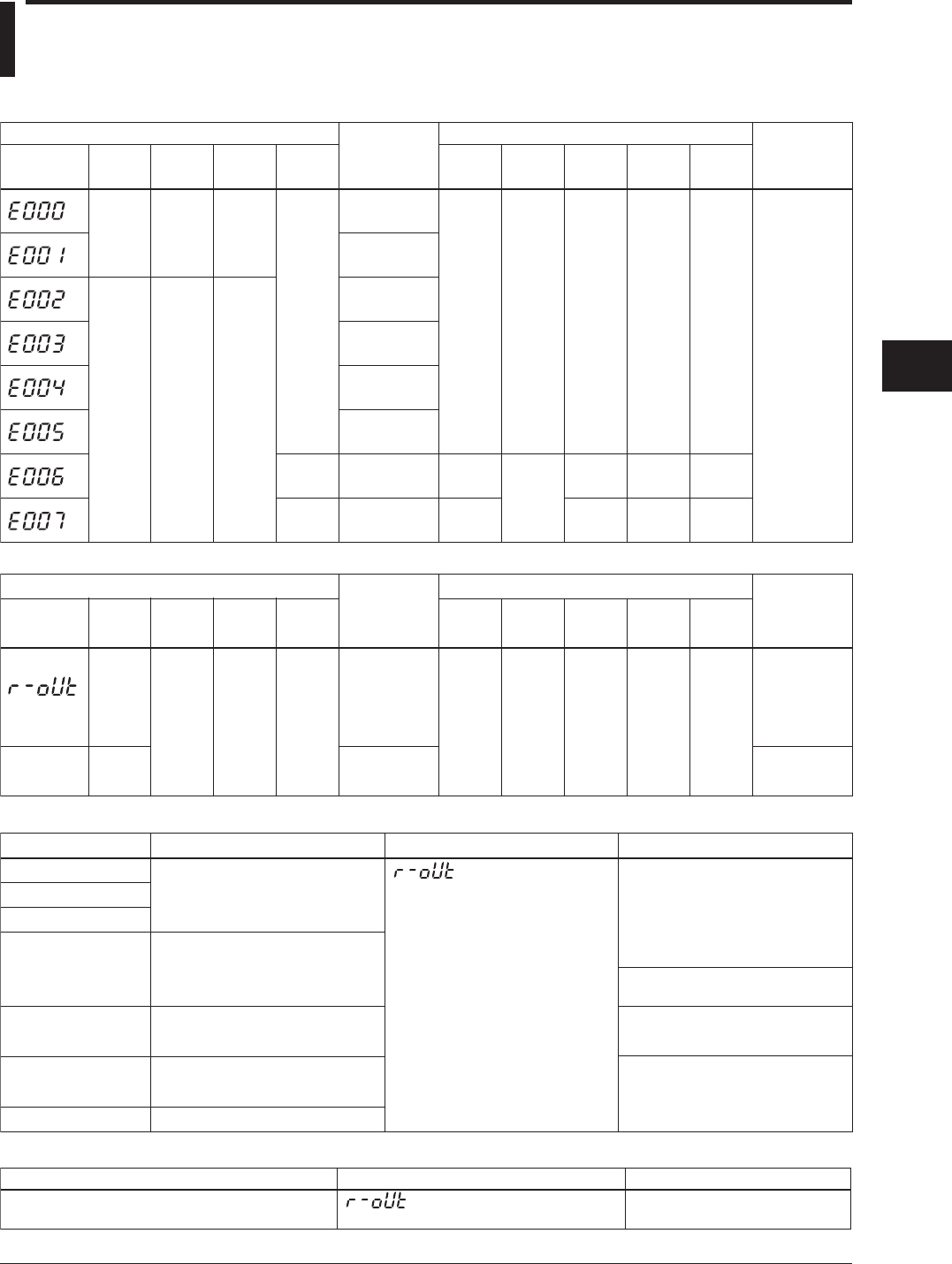Energy Meter Manual
Table Of Contents
- Introduction
- Notices
- Checking the Package
- Checking the Model and Suffix Codes
- Contents
- Chapter 1 Installation and Wiring
- 1.1 Installation with the ANSI 4-inch Round Form or JIS 110-square Instrument Size
- 1.2 Installation with the DIN 96-square Instrument Size
- 1.3 Wiring
- Crimping Terminal Recommendations
- Single-phase two-wire system (voltage input, current input, power supply)
- Single-phase three-wire system (voltage input, current input, power supply)
- Three-phase three-wire system (voltage input, current input, power supply)
- Three-phase four-wire system (voltage input, current input, power supply)
- Three-phase four-wire system (2.5 element) (voltage input, current input, power supply)
- Other Wiring
- 1.4 Attaching the Dust Cover and Terminal Cover
- Chapter 2 Preparations before Starting Measurement (Set up the PR300 First)
- Chapter 3 Parameter Setting Operations
- 3.1 Basic Parameter Setting Operations
- 3.2 Setting the VT and CT Ratios
- 3.3 Setting the Integrated Low-cut Power
- 3.4 Setting RS-485 Communication Conditions
- 3.5 Setting Ethernet Communication Conditions
- 3.6 Setting Pulse Output Conditions
- 3.7 Setting Analog Output Conditions
- 3.8 Setting Demand Measurement Conditions
- 3.9 Setting the Measured Value Display Pattern
- 3.10 Setting the “Indicator-out” Mode and Locking Parameters
- Chapter 4 Operation for Display of Measurement Items and Measurement Method
- 4.1 Measurement Items
- 4.2 Switching Display Pattern
- 4.3 Displaying Measured, Instantaneous, and Maximum/Minimum Values
- Example Display and Measuring Ranges of Active Power (Regenerative Power)
- Example Display and Measuring Ranges of Reactive Power
- Example Display and Measuring Ranges of Apparent Power
- Example Display and Measuring Ranges of Voltage
- Example Display and Measuring Ranges of Current
- Example Display and Measuring Ranges of Power Factor
- Example Display and Measuring Ranges of Frequency
- How to Switch between Instantaneous Value, Maximum Value, and Minimum Value
- 4.4 Phase Switching for Voltage and Current
- 4.5 Displaying Energy Values
- 4.6 Resetting Measured Values
- 4.7 Demand Measurement (Optional Measuring Function)
- Chapter 5 Troubleshooting
- Appendix
- Appendix 1 Specifications of PR300
- Measuring Function
- Power Items and Equations
- Input Specifications
- Digital Input Specifications
- Analog Output Specifications (additional output function)
- Pulse Output Specifications (additional output function)
- Demand Alarm Output Specifications (optional measuring function)
- Communication Specifications
- Standard Performance
- Safety and EMC Standards
- Environmental Conditions
- Mounting and Shape
- Appendix 2 System Reset
- Appendix 3 Parameter Map
- Appendix 4 Parameter List
- Appendix 5 Alphanumeric Characters Table for 7-segment LED
- Appendix 1 Specifications of PR300
- Index
- A
- C
- D
- E
- H
- I
- M
- O
- P
- R
- S
- T
- V
- W
- Wiring diagram
- Single-phase two-wire system
- Single-phase three-wire system
- Three-phase three-wire system
- Three-phase four-wire system
- Three-phase four-wire system (2.5 element)
- Analog output
- Demand alarm output
- Demand alarm release
- Ethernet communication
- Integration control signal
- Palse output
- RS-485 communication
- Wiring diagram

Troubleshooting
5-1
IM 77C01E01-01E
1
2
3
4
5
A
5.1 Error Display and Recommended Response
Failure at the Time of Turning on the Power and during Operation
Recommended
response
Request
repair.
Upper display
of measured
value display
Error display Status
Power
lamp
Phase and
wire system
lamp
Communi
-cation
lamp
Pulse
lamp
Unstable Off Off
Off
Normal
action
Normal
action
Communi-
cation
Disabled Disabled Disabled Disabled
Off
Power
calculation
Disabled
Pulse output
(contact
point)
Analog
output
Demand
alarm
Type of fault
RAM error
ROM error
System data
fault
Calibration
data fault
Parameter
fault
Backup fault
Normal
action
Off
Normal
action
Normal
action
Disabled
Normal
action
DisabledDisabledDisabled
Normal
action
Normal
action
EEPROM
error
ADC error
Errors during Operation
Recommended
response
Confirm the
input.
The product is
restored when
a normal frame
is received.
Upper display
of measured
value display
Error display Status
Power
lamp
Phase and
wire system
lamp
Communi
-cation
lamp
Pulse
lamp
On
Blinks at
intervals of
125
milliseconds.
Normal
action
Normal
action
Normal
action
Normal
action
Normal
action
Normal
action
Normal
action
Normal
action
Communi-
cation
Power
calculation
Pulse output
(contact
point)
Analog
output
Demand
alarm
Type of fault
Measured
input error
Communication
error
blinking
Normal
action
Errors at the Measured input error
Measurment items
Active power
Reactive power
Apparent power
Voltage
Current
Power factor
Frequency
Measured input error conditions
120% or more of “secondary rated
power VT ratio CT ratio”
120% or more of
“voltage range VT ratio”
Less than 10% of
“voltage range VT ratio”
120% or more of
“current range CT ratio”
Out of the measuring range
(LEAD 0.5 to 1 to LAG 0.5)
Out of the measuring range (45 to 65 Hz)
Error display
and the measured value
blink alternately
Recommended response
The error is cleared by inputting a
measured value less than 120%.
The error is cleared by inputting a
measured value less than 120%.
The error is cleared by inputting a
measured value within the
measuring range.
The error is cleared by inputting a
measured value 10% or more.
Errors at the Time of Setting Parameters
Example
The setpoint is out of the range.
Error display
and the setpoint blink alternately on
the display.
Recommended response
The error is cleared by setting a value
within the range.
Chapter 5 Troubleshooting










